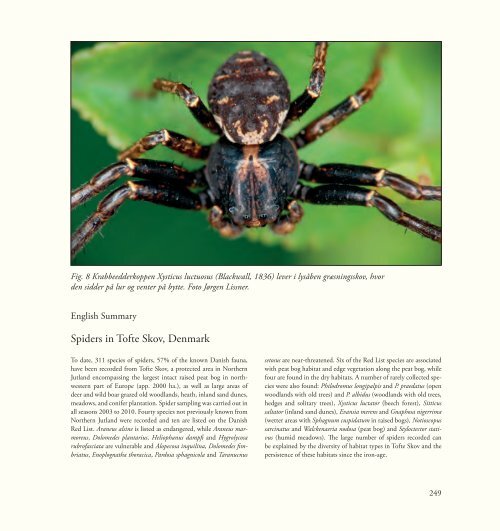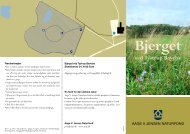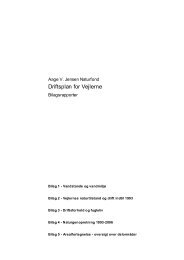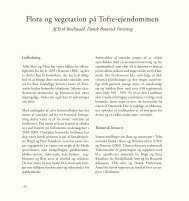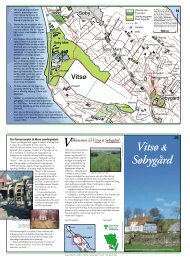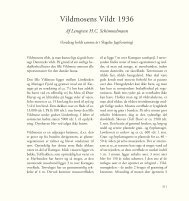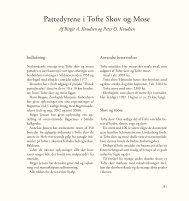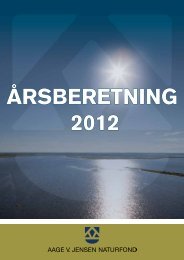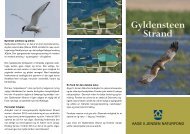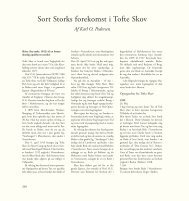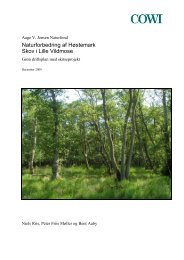Edderkopper i Tofte Skov
Edderkopper i Tofte Skov
Edderkopper i Tofte Skov
Create successful ePaper yourself
Turn your PDF publications into a flip-book with our unique Google optimized e-Paper software.
Fig. 8 Krabbeedderkoppen Xysticus luctuosus (Blackwall, 1836) lever i lysåben græsningsskov, hvor<br />
den sidder på lur og venter på bytte. Foto Jørgen Lissner.<br />
English Summary<br />
Spiders in <strong>Tofte</strong> <strong>Skov</strong>, Denmark<br />
To date, 311 species of spiders, 57% of the known Danish fauna,<br />
have been recorded from <strong>Tofte</strong> <strong>Skov</strong>, a protected area in Northern<br />
Jutland encompassing the largest intact raised peat bog in northwestern<br />
part of Europe (app. 2000 ha.), as well as large areas of<br />
deer and wild boar grazed old woodlands, heath, inland sand dunes,<br />
meadows, and conifer plantation. Spider sampling was carried out in<br />
all seasons 2003 to 2010. Fourty species not previously known from<br />
Northern Jutland were recorded and ten are listed on the Danish<br />
Red List. Araneus alsine is listed as endangered, while Araneus marmoreus,<br />
Dolomedes plantarius, Heliophanus dampfi and Hygrolycosa<br />
rubrofasciata are vulnerable and Alopecosa inquilina, Dolomedes fimbriatus,<br />
Enoplognatha thoracica, Pardosa sphagnicola and Taranucnus<br />
setosus are near-threatened. Six of the Red List species are associated<br />
with peat bog habitat and edge vegetation along the peat bog, while<br />
four are found in the dry habitats. A number of rarely collected species<br />
were also found: Philodromus longipalpis and P. praedatus (open<br />
woodlands with old trees) and P. albidus (woodlands with old trees,<br />
hedges and solitary trees), Xysticus luctator (beech forest), Sitticus<br />
saltator (inland sand dunes), Evansia merens and Gnaphosa nigerrima<br />
(wetter areas with Sphagnum cuspidatum in raised bogs), Notioscopus<br />
sarcinatus and Walckenaeria nodosa (peat bog) and Styloctector stativus<br />
(humid meadows). The large number of spiders recorded can<br />
be explained by the diversity of habitat types in <strong>Tofte</strong> <strong>Skov</strong> and the<br />
persistence of these habitats since the iron-age.<br />
249


